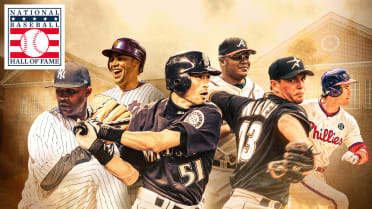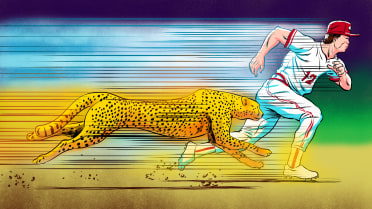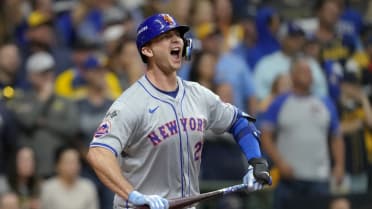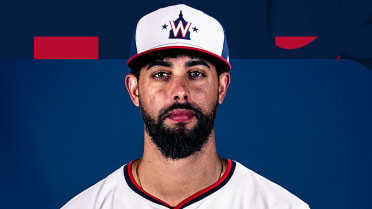Braves' Top 5 second basemen: Bowman's take

No one loves a good debate quite like baseball fans, and with that in mind, we asked each of our beat reporters to rank the top five players by position in the history of their franchise, based on their career while playing for that club. These rankings are for fun and debate purposes only … if you don’t agree with the order, participate in the Twitter poll to vote for your favorite at this position.
Here is Mark Bowman’s ranking of the top 5 second basemen in Braves history. Next week: third basemen.
1. Marcus Giles, 2001-06
Key fact: Giles’ .809 OPS ranks first among all Braves second basemen (min. 300 games).
Giles exceeded all expectations after being selected in the 53rd round of the 1996 MLB Draft. The energetic infielder produced a 15.9 fWAR while serving as Atlanta’s starting second baseman from 2003-06. The only Major League second baseman with a better fWAR during that span was the Phillies’ Chase Utley (16.1).
• Braves All-Time Around the Horn Team: Catchers | First basemen
After earning his only All-Star selection and tallying a modern-era franchise-record 49 doubles in 2003, Giles broke his collarbone six weeks into the '04 season. He collected 45 more doubles while producing an .826 OPS in 2005, but he was designated for assignment after declining in '06.
Giles gets the nod based on one really good season and two other decent ones. So, this may lead some to question why Andres Galarraga didn’t get more love in last week’s ranking of first basemen. Well, quite simply, the franchise has had far more better first basemen than second basemen.
Looking only at the second basemen who have compiled at least 1,500 plate appearances while playing for the Braves dating to 1900, Giles ranks first in both fWAR (17.9) and Weighted Runs Created Plus (112). He also stands as the only second baseman in franchise history to compile three different seasons with a 110 OPS+ or better.
Giles might not hold this top spot for much longer. But for now, we’ll wait at least one more year before giving it to Ozzie Albies.
2. Tony Cuccinello, 1936-40, 1942-43
Key fact: Cuccinello was selected to play in MLB’s first All-Star Game in 1933.
After spending his first six MLB seasons with the Reds and Dodgers, Cuccinello became the Braves’ second baseman in 1936 and remained in that role until being traded during the 1940 season. He led the National League in assists during his first season with the Braves.
Cuccinello's 14.2 fWAR from 1936-40 ranked second among all NL second basemen. It also stands as the second-best mark constructed by a Braves second baseman dating to 1900.
3. Ozzie Albies, 2017-present
Key fact: Albies stands with Mickey Mantle and Eddie Murray as the only switch-hitters to hit .275 with at least 50 homers and an .800 OPS through the first three years of his career at age 22 or younger.
Twelve months ago, there was still some doubt about whether Albies should continue switch-hitting. But the adjustments he made from the left side proved quite beneficial, as he hit 24 homers and ranked third among NL second basemen with a 4.6 fWAR last year.
One great year combined with the impressive first half that Albies produced in 2018 might not be considered by some to be enough to be considered for this list. But this 23-year-old infielder has the potential to be one of the game’s best for many years to come, and the 10.3 fWAR he’s amassed already ranks sixth among Braves’ second basemen dating to 1900.
4. Felix Millan, 1966-72
Key fact: Millan recorded a franchise-record six hits in a win over the Giants on July 6, 1970.
Millan debuted with the Braves in 1966 and became a fan favorite in Atlanta. He earned three straight All-Star selections (1969-71) and won two Gold Glove Awards (1969 and ’72). Though he contributed little offensively, he still ranked fourth among NL second basemen with the 8.0 fWAR he produced from 1968-72.
5. Glenn Hubbard, 1978-87
Key fact: Hubbard joined Dale Murphy, Pascual Perez and Bruce Benedict as the Braves’ representatives at the 1983 All-Star Game.
Without Hubbard, Giles might not have ever made it to the Major League level. Hubbard’s commitment as a Minor League and Major League coach provided great value to Giles and many other Braves during the late 1990s and the early part of this century. But he was also a pretty good player himself.
Hubbard started more games at second base than any other Braves player of the modern era, and his 12.8 fWAR ranks third among the franchise’s second basemen dating to 1900.
Honorable mentions
Hall of Famer Red Schoendienst fueled a run to a World Series title after being acquired midway through the 1957 season. But after finishing third in NL MVP Award voting that year, he began to feel the effects of tuberculosis, which was diagnosed after he played in the 1958 World Series.
Bobby Lowe ranks first among the franchise’s second basemen with the 23.1 fWAR he constructed from 1890-1901.
Davey Johnson’s 43-homer season in 1973 is one of the most memorable produced by any player who played second base in franchise history.
Bill Sweeney began his career as a third baseman, but he garnered NL MVP consideration during each of the three seasons (1911-13) he spent as the club’s second baseman.
Mark Lemke served as the Braves' second baseman during a majority of the magical 1990s.
Supervising Club Reporter Mark Bowman has covered the Braves for MLB.com since 2001.




